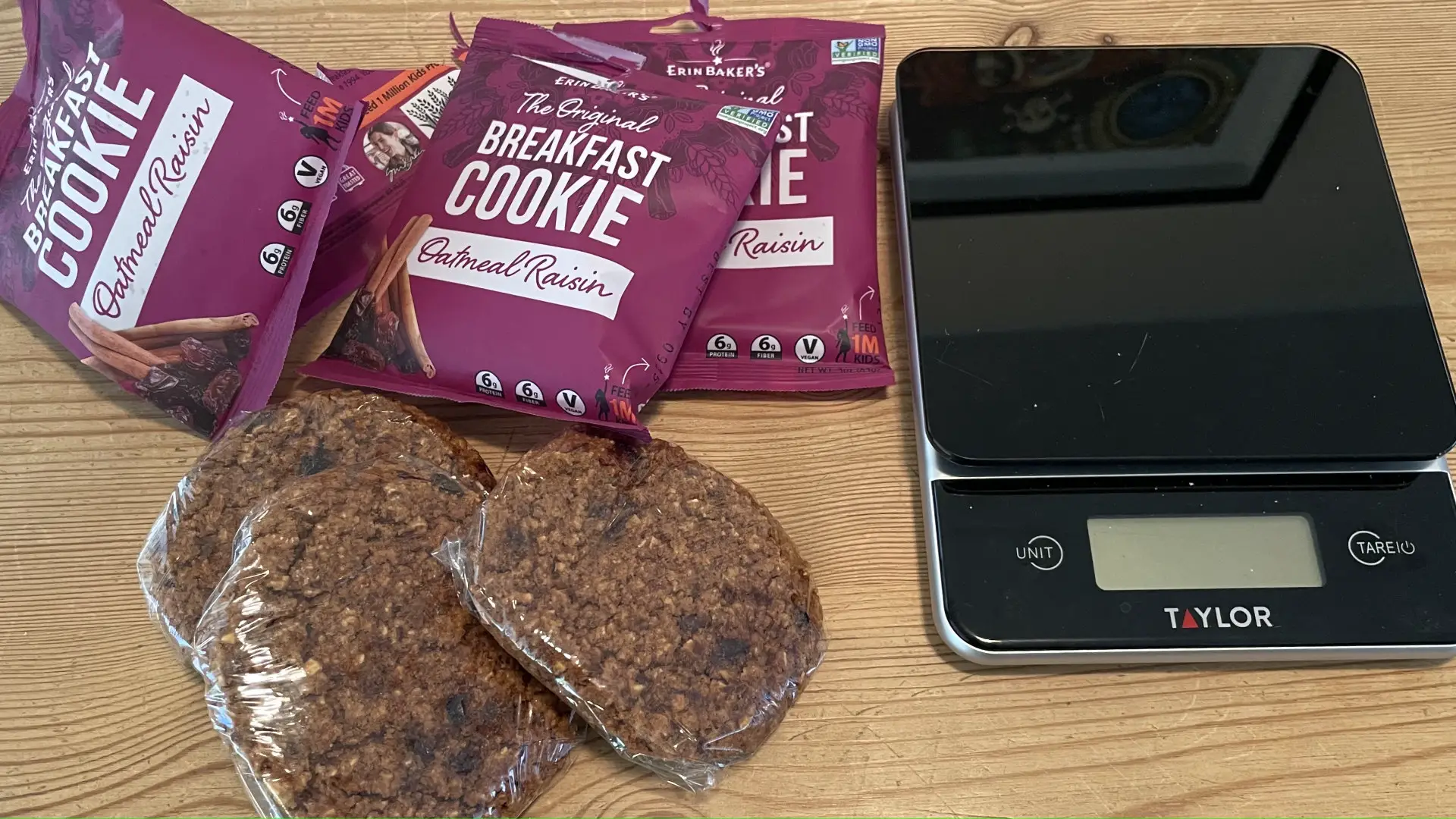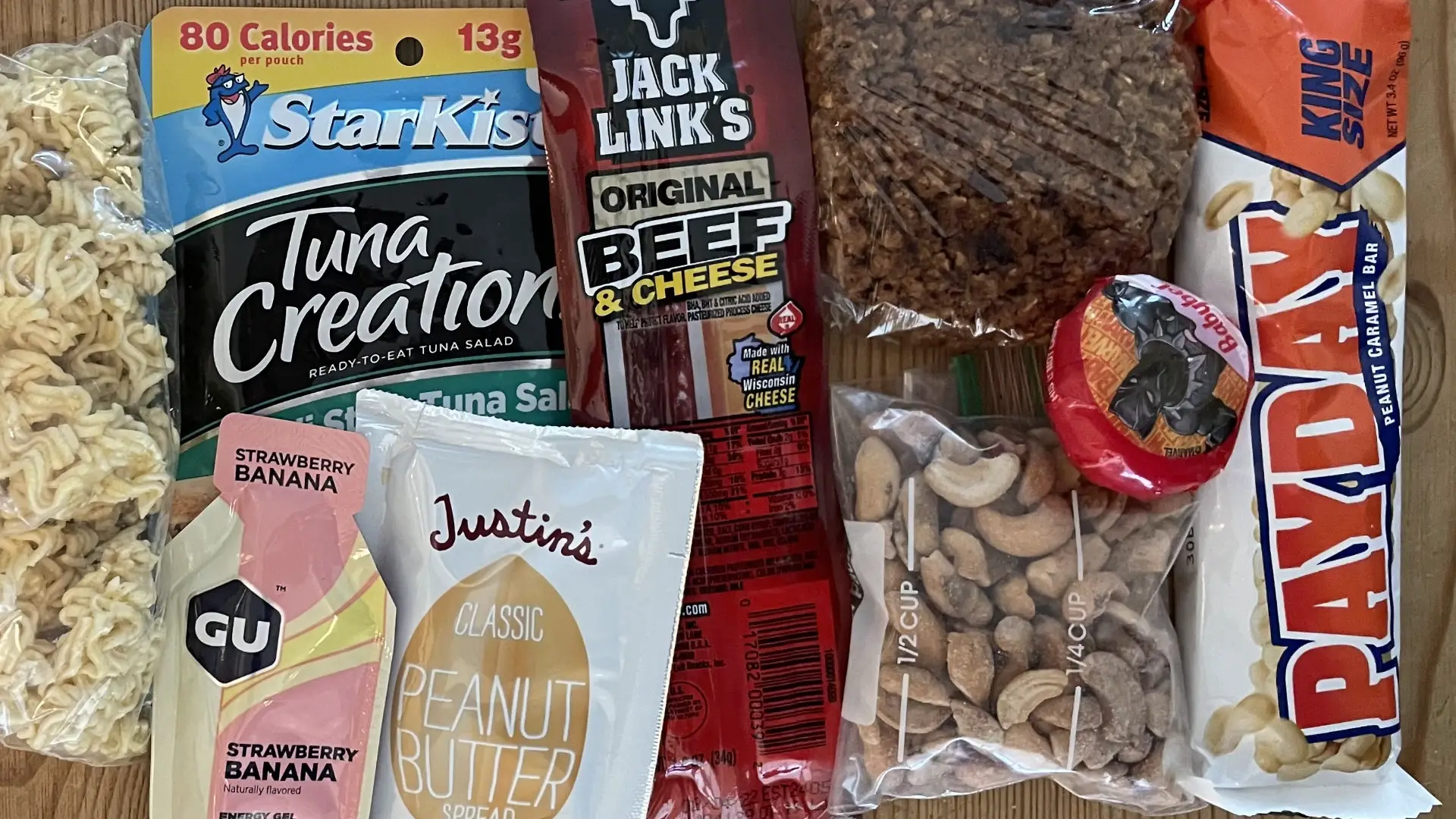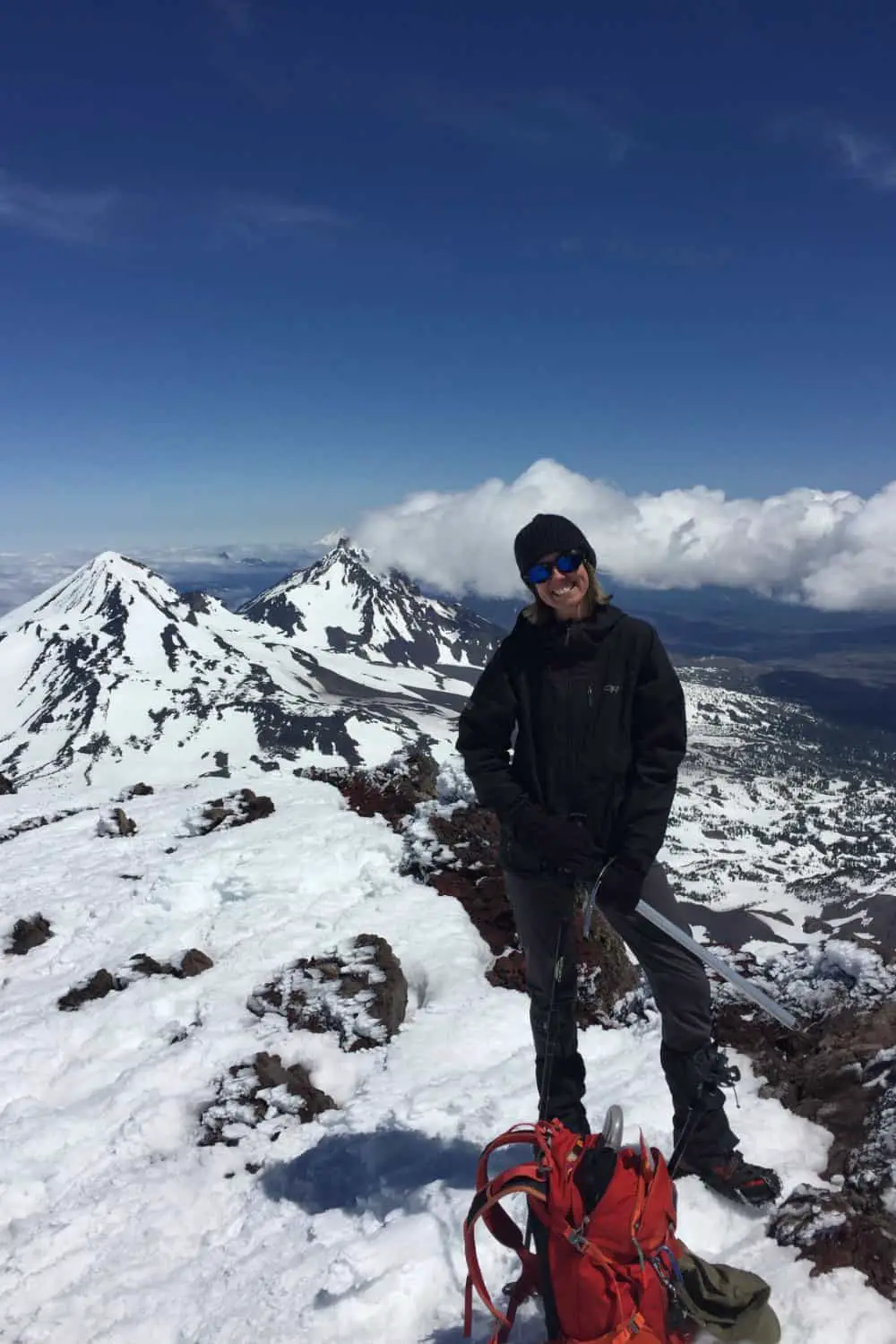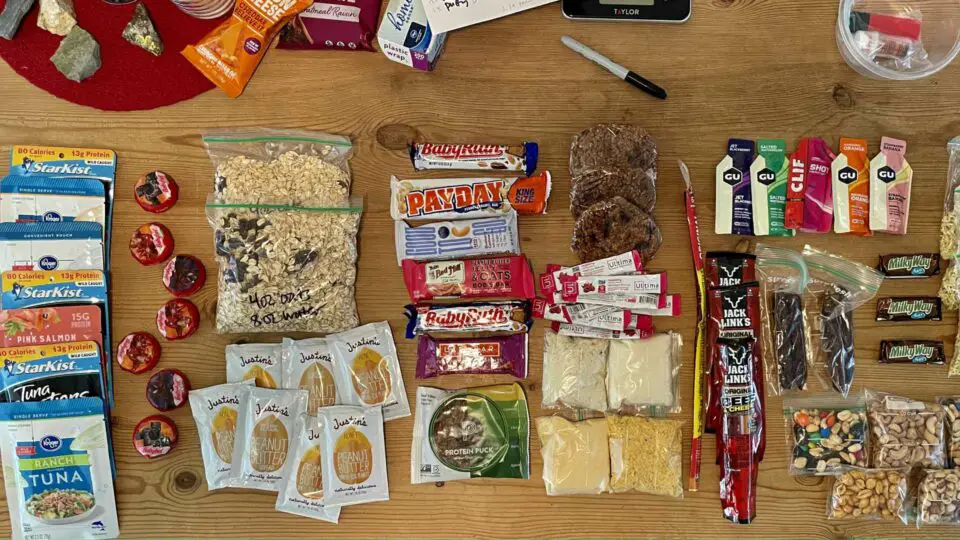Arguably one of the very most important considerations for your trip is your food plan. Shelter, shoes, water, food: everything else is sort of just the icing. But the tricky thing about food planning for the John Muir Trail is that you’re trying to get the lightest food, which also has lots of calories and fat, and also is nonperishable, doesn’t take up too much room, and is something you know you’ll actually eat.
For breakfasts, I’ve packed baggies of oats with raisins and brown sugar, and one packet of Justin’s peanut butter per morning to mix in to the oatmeal for added protein, weight, and flavor.
Lunch is a packet of tuna, a Babybel cheese, and a couple ounces of nuts.
Two bars for each day, whether a candy bar, fruit bar, or protein bar. A meat stick each day. One Gu packet and two Ultima electrolyte packets to mix into water throughout each day.
For dinners, I personally didn’t use any of the dehydrated meals like Mountain House or Peak Refuel, though those are both tried and true products that a lot of folks swear by. I went the powdered mashed potato and Top Ramen route, things I know I can eat no matter what. I have flour tortillas and packets of ranch just because those things are life to me.
Some days I think that’s too much, some days I think it won’t be enough. I worry I’ll get out there and not be hungry and be carrying all this extra weight, but I also worry that my appetite will ramp up and I’ll wish I had thrown in those extra Sour Patch Kids. And so I keep packing and repacking my bear canister (The BV500) and weighing each item, or each day, or the whole can. Right now it’s at 10 lbs including the canister which weighs 2.90 lbs., which seems too low as most people say 1.5 lbs per day is about right, but I’m trying to keep my pack weight down at the same time.

The goal is to find foods that pack a big punch for their weight. Nuts, nut butters, powdered beans, powdered mashed potatoes, fruit leathers, and protein bars are good places to start but I’d recommend you get a little scale and start really paying attention to what you like and what those things weigh. Weigh quinoa vs rice, bring condiment or olive oil packets to boost the fat of any meal, try some of the dehydrated meals at home and see how you like them. Check the calories and fat on each item in relation to what the item weights, going for the lowest weight with the most calories and fat. This is your fuel. Some say to shoot for 5000 calories a day but my plan is way less than that; so do your own personalized research here, as the numbers are all over the board and often not based on someone your same size doing your same amount of exertion per day.
Think salt, sugar, fat.
Fun fact: That cheese in the red wax casing, the Babybel mozzerella? Doesn’t need to be refrigerated and has just the right amount of (extra) salt, and something about the texture when you’re out there is just perfect.
Something I didn’t fully understand till started packing the food for this trip is the extra weight and space taken up by commercial packaging. So I took everything I could out of whatever it came in and repacked it into snack size ziplock baggies. Doing this saved me 9 ounces and opened up a lot of room in the bear can.
Speaking of bear cans, I went with the hard plastic Bear Vault brand as it had the strongest reviews of all the approved food storage options for the JMT, and I chose the BV500 over the much shorter BV450 because we wanted to do only one resupply (which meant I’d need to have about 7 days of food on me to start). I’ve packed and repacked it several times now, trying to stack things in order of use, in order of date, sweet on one side, savory on the other… and I’ll probably do it again before we leave. A few times. This is only my second trip using one, so I haven’t fully developed my system with it yet. I can at least open and close it without incident (it’s harder than you might think!) and have found that it makes a perfect stool as well as a device with which to stretch your back, as in a supported backbend (feels amazing).
I didn’t rehydrate anything though some folks make, say, chili, or lasagna, weeks before they leave, and dehydrate a serving of it for their trek. Some make their own jerky or dried fruits. Some buy bulk nuts and things and make their own trail mix, keeping either one big baggie of it in their bear canister, or small baggies measured out for each day. One baggie weighs less than seven baggies but I like having individual portions, so as not to binge or hoard, which I can see happening with one larger bag. This is a great time for control issues and OCD to come out to play.

To recap, my go-to items are:
- Oatmeal with raisins and peanut butter
- Powdered mashed potatoes (a quick shout out to the Idahoan company)
- Top Ramen
- Peanuts, almonds, cashews in 3 oz servings
- Protein Puck, Macro Bar, Larabar, Bobo’s, Tigers Milk
- Payday, Baby Ruth, Snickers, Mike & Ikes, Hot Tamales
- Babybel cheese
- Meat sticks
- Flour tortillas
- Tuna and salmon in shelf stable packets
- Ultima electrolyte powder, 2/day
- Sport Beans, Salt Stick, Honey Stinger gels, and Gu packets in hip pockets for quick energy rescue
You can get much fancier, but I’m going to eat on the trail the way I eat at home: comfort food plus a bit of junk food with a few quality pieces thrown in, and more savory than sweet. Conspicuously missing is my favorite mountain fare: pickles. I eat them, I drink the juice, they invigorate me. They also add so much weight, and even in a ziplock trashbaggie make my whole pack smell like pickles.
And basically how I organized it is I laid out all the food by day on the basement work bench so I could see it all and weigh it all and get realistic about what I should bring; then three weeks before departure, I put half of it in the bucket (along with a big bag of tortilla chips and a fresh pair of socks) and mailed it off. The first half remains here, continuing to get rearranged every time I read a new article about ultralight backpacking.
The main thing about food is to pack things you know you’ll eat, don’t just duplicate someone else’s menu. Err on the side of too much food in case you get stuck, or stay longer than planned. Within reason though: hopefully you have enough other hiking or camping experience to know how much you’ll really eat once your trek is underway.
Also, you can put practically anything in a tortilla.
Invaluable resources while I was food shopping:

Wendy Harrington is a California native who has lived in a small town at the foothills of the Cascade Mountains in Washington state since 2001. Her love of trail running and peakbagging has led her to summit all five Washington volcanoes, climb to the high points of three states, and put nearly a thousand miles a year on her boots. Her loves include ridgelines, saddles, granite, one-day pushes on big mountains, anything volcanic, long solo days, and objectives that push limits and test endurance.

